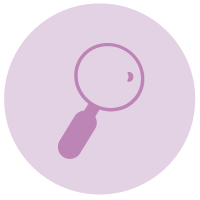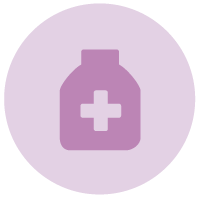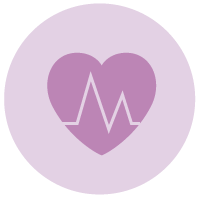elf examination and early detection are the first steps in treating and beating breast cancer. Learn all the possible causes of breast pain, lumps, and tenderness.
Part 1 of 11: Overview
Breast Pain or Lump: Is It Cancer?
A sharp pain in your breast, possibly with some tenderness, can be scary. It may have you wondering if it could be something serious. A breast lump is often the first thing that women and even men notice that spurs a visit to their doctor. Although breast cancer generally shows no symptoms in the early stage, timely detection can turn a story of breast cancer into a survivor's tale.
Part 2 of 11: Causes
Causes of Pain and Tenderness

We often associate pain with something wrong, so when women feel tenderness or pain in their breast, they often assume it to be breast cancer. However, breast pain is rarely the first noticeable symptom of breast cancer. Several other factors can cause the pain.
Clinically known as mastalgia, breast pain can also be caused by the following:
- the fluctuation of hormones caused by menstruation
- some birth control pills
- some infertility treatments
- a bra that doesn't fit
- breast cysts
- large breasts, which may be accompanied by neck, shoulder, or back pain
- stress
Part 3 of 11: Signs and Symptoms
Breast Cancer

A lump in the breast is typically associated with breast cancer, but most of the time, a lump in the breast isn't cancer. From hormonal changes in teens to damaged fat tissue, more than 90 percent of all breast lumps in women in their early 20s to early 50s are noncancerous (benign), according to the Mayo Clinic.
Common causes of benign breast lumps include:
- breast infection
- fibrocystic breast disease (“lumpy breasts”)
- fibroadenoma (noncancerous tumor)
- fat necrosis (damaged tissue)
With fat necrosis, the mass cannot be distinguished from a cancerous lump without a biopsy.
Even though the majority of breast lumps are caused by less severe conditions, new, painless lumps are still the most common symptom of breast cancer.
Early on, a woman may notice a change in her breast when she performs a monthly breast exam or minor abnormal pain that doesn’t seem to go away. Early signs of breast cancer include:
- changes in the shape of the nipple
- breast pain doesn't go away after your next period
- a new lump that doesn’t go away after your next period
- nipple discharge from one breast that is clear, red, brown, or yellow
- unexplained redness, swelling, skin irritation, itchiness, or rash on the breast
- swelling or a lump around the collarbone or under the arm
A lump that is hard with irregular edges is more likely to be cancerous
Later signs of breast cancer include:
- retraction, or inward turning of the nipple
- enlargement of one breast
- dimpling of the breast surface
- an existing lump that gets bigger
- an "orange peel" texture to the skin
- vaginal pain
- unintentional weight loss
- enlarged lymph nodes in the armpit
- visible veins on the breast
Having one or more of these symptoms doesn’t necessarily mean you have breast cancer. Nipple discharge, for example, can also be caused by an infection. See your doctor for a complete evaluation if you experience any of these signs and symptoms.
Part 4 of 11: Warning Signs of Breast Cancer in Men
Men and Breast Cancer
Breast cancer is not typically associated with men. However, male breast cancer can occur in rare instances at any age, although it is more common in older men. Many people do not realize that men have breast tissue too, and those cells can undergo cancerous changes. Since male breast cells are much less developed than women’s breast cells, breast cancer in men is not as common.
The most common symptom of breast cancer in men is a lump in the breast tissue.
Other than a lump, symptoms of breast cancer in men include:
- thickening of the breast tissue
- nipple discharge
- redness or scaling of the nipple
- a nipple that retracts or turns inward
- unexplained redness, swelling, skin irritation, itchiness, or rash on the breast
Since most men do not regularly check their breast tissue for signs of lumps, male breast cancer is often diagnosed much later.
Part 5 of 11: Exams
Breast Exams
When you visit your doctor with concerns about breast pain, tenderness, or a lump, there are common tests they might perform.
Physical examination
Your doctor will examine your breasts, the skin on your breasts, and check for nipple problems and discharge. He or she may also feel your breasts and armpits to look for lumps.
Medical History
Your doctor will also ask you questions about your health history, including any medications you might be taking, as well as the medical history of immediate family members. Since breast cancer can sometimes be related to your genes, it’s important to tell your doctor about any family history of breast cancer. Your doctor will also ask you about your symptoms, including when you first noticed them.
Mammogram
Your doctor may request an X-ray of the breast to help distinguish between a benign and malignant mass.
Ultrasound
Ultrasonic sound waves can be used to produce an image of the tissue.
MRI
Your doctor may suggest an MRI in conjunction with other tests. MRI is another noninvasive imaging test used to examine breast tissue.
Biopsy
A removal of a small amount of breast tissue can be used for testing.
Part 6 of 11: Types
Types of Breast Cancer
There are two categories that reflect the nature of breast cancer:
- Noninvasive (in situ) cancer is cancer that has not spread from the original tissue. This is referred to as stage 0.
- Invasive (infiltrating) cancer is cancer that has spread to surrounding tissues. These are categorized as stages 1, 2, 3, or 4.
The tissue affected determines the type of cancer:
- Ductal carcinoma is a cancer that forms in the lining of the milk ducts. This is the most common type of breast cancer.
- Lobular carcinoma is cancer in the lobules of the breast. The lobules are where milk is produced.
- Sarcoma is cancer in the breast's connective tissue. This is a rare type of breast cancer.
Part 7 of 11: Growth
Genes and Hormones Affect Cancer Growth
Geneticists are starting to learn how genes affect the growth of cancer and have even identified one:
- The HER2 gene in cancer cells fuels their growth. Medications can help shut the HER2 gene down.
Like genes, hormones may also speed up the growth of some types of breast cancers that have hormone receptors.
- If a cancer is estrogen receptor-positive, it responds to estrogen.
- If a cancer is progesterone receptor-positive, it responds to progesterone.
- If a cancer is hormone receptor-negative, it has no hormone receptors
Part 8 of 11: Treatments
Treatments

Depending on the type and stage of cancer, treatments can vary. However, there are some common practices doctors and specialists use to combat breast cancer:
- A lumpectomy is when your doctor removes the tumor while leaving your breast intact.
- A mastectomy is when your doctor surgically removes all of your breast tissue including the tumor and connecting tissue.
- Chemotherapy is the most common cancer treatment, and it involves the use of anticancer drugs. These drugs interfere with cells' ability to reproduce.
- Radiation uses X-rays to treat cancer directly.
- Hormone and targeted therapy can be used when either genes or hormones play a part in the cancer's growth.
Part 9 of 11: Warning Signs of Recurrence
Recurrence
Despite initial treatment and success, breast cancer can sometimes come back. This is called recurrence, which happens when a small amount of cells escape the initial treatment.
Symptoms of a recurrence in the same place as the first breast cancer are very similar to symptoms of the first breast cancer. They include:
- a new breast lump
- changes to the nipple
- redness or swelling of the breast
- a new thickening near the mastectomy scar
If breast cancer comes back regionally, it means that the cancer has returned to the lymph nodes or close by the original cancer but not exactly the same place. The symptoms may be slightly different.
Symptoms of a regional recurrence may include:
- lumps in your lymph nodes or near the collarbone
- chest pain
- pain or loss of sensation in your arm or shoulder
- swelling in your arm on the same side as the original breast cancer
If you’ve had a mastectomy or other surgery related to breast cancer, you might get lumps or bumps caused by scar tissue in the reconstructed breast. This is not cancer, but you should let your doctor know about them so they can be monitored.
Part 10 of 11: Outlook
Outlook

As with any cancer, early detection and treatment are major factors in determining the outcome. Breast cancer is easily treated and usually curable when detected in the earliest of stages.
The American Cancer Society says the five-year survival rate for breast cancer that is stage 0 to stage 2 is more than 90 percent. The five-year survival rate for stage 3 cancer is more than 70 percent.
Part 11 of 11: Prevention
Stay Informed

Breast cancer is the most common cancer in women, according to the World Health Organization. Whether you're concerned about breast pain or tenderness, it's important to stay informed on risk factors and warning signs of breast cancer.
The best way to fight breast cancer is early detection, whether that includes self-examinations, annual breast exams at your doctor’s office, or regular mammograms. If you're worried that your breast pain or tenderness could be something serious, make an appointment with your doctor today. If you find a lump in your breast (even if your most recent mammogram was normal), see your doctor.